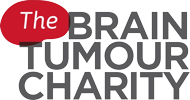Home Conditions Brain Tumours Meningioma
What is Meningioma?
Meningioma is a type of primary brain tumour from the meninges, the membranes that surrounds the brain and, on rare occasions, the spinal cord. Meningiomas can start anywhere in the brain and spinal cord but are more common in the cerebrum and cerebellum. The majority of meningiomas are benign (eg. non-cancerous). Meningiomas that are malignant (cancerous) account for about 1% of all primary brain tumours.
Meningiomas are slow-growing tumours, most are solitary and sporadic. They may not show any symptoms and are frequently discovered during examinations for something else. Due to increased scanning they are often found by chance.
Grade I meningiomas are low grade tumours and are most common. This means the tumour cells grow slowly
Grade II atypical meningiomas are mid-grade tumours. This means the tumours have bigger chance of coming back after being removed.
Grade III anaplastic meningiomas are malignant (cancerous). This means they are fast-growing tumours.
Symptoms of Meningioma
Meningiomas are slow-growing tumours and symptoms depend on the where the tumour is located in the brain. There may not be any symptoms and meningiomas are frequently discovered during examinations for anything else. Due to increased scanning they are often foundry chance. As the meningioma grows it can cause:
- Headaches
- Changes in personality or behaviour
- Being confused
- Memory loss
- Weakness, especially in an arm or leg
- Problems with balance
- Seizures (fits)
- Problems with eyesight or speech
- Drowsiness
- Hearing loss
What are the causes?
Meningiomas have no known aetiology, but researchers are working to learn more.
Meningiomas account for approximately a quarter of all primary brain and spinal cord tumours in adults in the United Kingdom (25 percent).
Meningiomas are more likely to develop in those who have been exposed to radiation, especially in childhood. People with type II neurofibromatosis, a genetic (hereditary) disorder, are also at a higher risk.
How common are meningiomas?
Meningiomas account for 38 percent of primary brain tumours in the United Kingdom. This year, 34,840 persons are expected to be diagnosed with meningioma. The rate rises with age, with a significant increase in diagnostic rates in people 65 and over.
Diagnosing Meningionas
Diagnosis tests may include MRI or CT scans. A contrast dye is often given to help identify areas of the brain growing abnormal. A biopsy, blood tests, neurological examination and a brain angiogram can also be included.
It is important to determine the exact location, size, and the type of tumour to plan your treatment. A neurosurgeon will confirm your diagnosis and recommend the best treatment pathway.
Further information
Further information and support is available from:
Contact Amethyst
Want to know more about Gamma Knife Treatment?
Our friendly staff are here to help you, get in touch with them today




